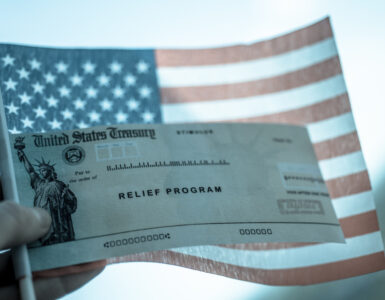Ask a single parent what their number one priority is, and they’ll probably say their kids. Since COVID-19 hit, you’ve probably held your kids a little closer, and you may have also come to this realization: Money is running low.
What can you do when money runs low? You could look for a job, but how can you work when the kids are stuck at home? You could hire a sitter, but they may cost more than you make.

2023
Tax Forgiveness
We know how challenging it can be to pay off your tax debt.
The IRS just announced the 2023 Fresh Start Program, to qualify more people for tax relief!
As you already know from firsthand experience, caring for a child on your own has always been tough. And as you can see from that issue above, the coronavirus outbreak made it ten times tougher due to job and income loss and the closure of schools.
There has been some help with the freezing of evictions, stimulus checks and unemployment from the CARES Act, and so on, but that help eventually runs out. What doesn’t run out? You need to keep putting food on the table, regardless of what’s going on.
There is help out there, especially when it comes to food. And if you’ve looked around on your own with no luck, give the following tips a try:
1. Call the Hunger Hotline.
If you’ve ever called a hotline before, you know they exist for one primary purpose: To help with emergencies. That’s what the USDA National Hunger Hotline does, and you can call it when your kitchen starts to look empty.
Food assistance is just one call away, so dial 866-3-HUNGRY on Monday through Friday to see if this can fix your situation. The hotline’s hours of operation are from 7 am to 10 pm Eastern time.
2. Contact social services.
Making this move may help you kill several birds with one stone. Since COVID-19 has led to crises with much more than just food, calling your state’s social services can help you find nutritional aid for your kids, child care, and more.
To connect with your local social services contact, visit this site.
3. Watch the news.
While you may have strayed from the news because it all seems negative as of late, you may want to start paying closer attention to it. Whether it’s by turning on the TV, keeping tabs on your local news’ website or Facebook page, or picking up a paper, you can find COVID-19 food assistance that changes daily.
Food drives and local charities are popping up all the time, and your local news is the best way to find when and where they will appear. As with most resources during these uncertain times, supplies are limited. In other words, when you see a food site advertised, don’t waste time visiting it. Also, be prepared for long lines.
4. Use the 211 service.
Dial 211 on your phone, and a local operator can tell you where local food distribution sites are.
5. Go to USA.gov.
The government offers various types of food assistance, including food stamps, WIC, and more.




